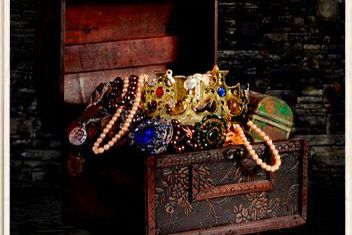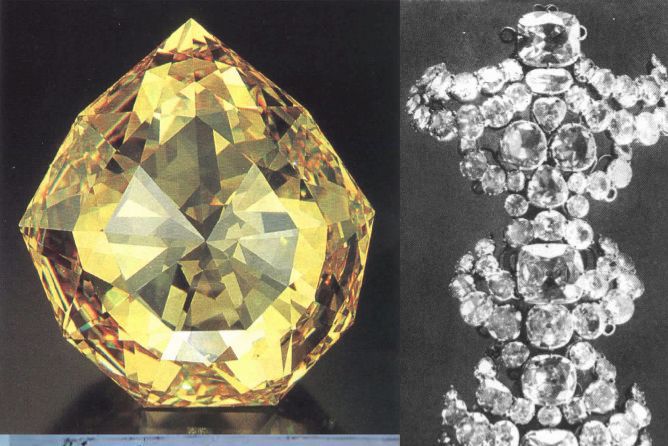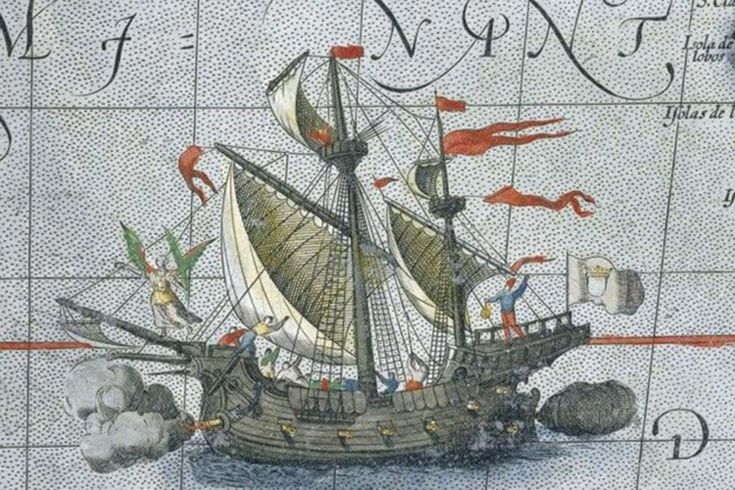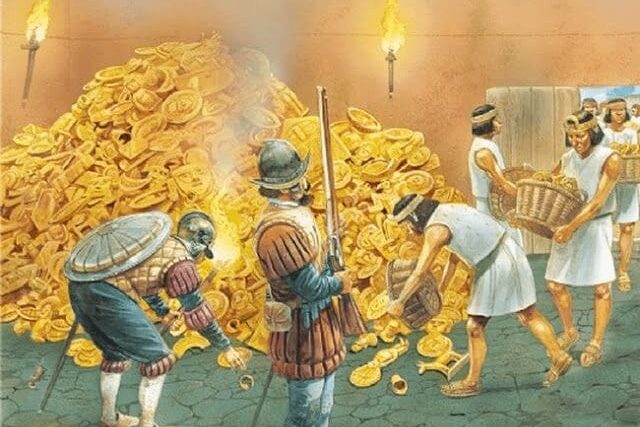1. The Treasure of Lima

Searching for lost treasure often captures the imagination more than anything else. While many legendary caches have been debunked or recovered, a surprising number of rich prizes are still considered genuinely lost, waiting to be found by the lucky (and very persistent) few.
This legendary haul originated in Lima, Peru, in 1820, a time when the city was on the brink of revolt. To protect the vast accumulated wealth of the Roman Catholic Church, estimated to be worth millions, the Viceroy of Lima decided to transport it to Mexico for safekeeping. The treasure included jeweled stones, candlesticks, and two life-size solid gold statues of the Virgin Mary holding the Baby Jesus. Captain William Thompson, commander of the vessel Mary Dear, was entrusted with the cargo. However, Thompson and his crew allegedly cut the throats of the guards and priests, took the treasure for themselves, and buried it on Cocos Island, off the coast of Costa Rica, before being captured. Despite numerous expeditions, the hoard remains unfound.
2. The Amber Room

The Amber Room was an opulent chamber crafted from six tons of amber panels, gold leaf, and mirrors, gifted to Peter the Great in 1716. Considered an “Eighth Wonder of the World,” the priceless masterpiece adorned the Catherine Palace near St. Petersburg until 1941. During World War II, Nazi forces looted the room and transported it to Königsberg Castle, a German city now known as Kaliningrad, Russia. The room was reportedly disassembled and crated in early 1944. Following the severe Allied bombing of Königsberg in August 1944, the crates’ documentation ended. Its current whereabouts are unknown, though theories range from its destruction in the castle fire to its being hidden in a secret bunker or sunken shipwreck. A full reconstruction was completed in 2003 and is on display at the Catherine Palace.
3. The Lost Dutchman’s Gold Mine

The legend of this incredibly rich gold mine is centered in the Superstition Mountains, east of Phoenix, Arizona, United States. It is named after German immigrant Jacob Waltz, who was mistakenly called a “Dutchman” in American vernacular of the time. Waltz, who died in 1891, is said to have rediscovered a massive gold vein, originally worked by the Peralta family of Mexican miners who were subsequently massacred by Apaches. On his deathbed, Waltz supposedly described the mine’s location to a neighbor, but it has never been successfully located, attracting thousands of prospectors annually. The Superstition Mountains are rugged and unforgiving, and the search for the mine has tragically led to the disappearance or death of several treasure hunters over the years.
4. The Lost Jewels of King John

One of the most enduring stories of English lost treasure dates back to 1216. King John was traveling from King’s Lynn in Norfolk to Newark-on-Trent when his baggage train attempted to cross the notoriously tidal estuary of The Wash in East Anglia. The wagons, which supposedly contained John’s priceless regalia, jewels, gold plate, and other crown valuables, were engulfed by the rapidly incoming tide. Contemporary chronicles suggest the entire entourage, including horses and men, was swallowed by the muddy whirlpools. The treasure was never recovered, and the king died from dysentery shortly after. The actual contents of the lost haul are debated, but it is generally accepted that a significant portion of the English Crown’s mobile wealth vanished in the disaster.
5. The Florentine Diamond

The Florentine Diamond was a massive, pale yellow diamond of 137.27 carats, cut into a nine-sided, rose-cut double crown. Its history can be traced back to the Medici family in Florence, Italy, and it later became part of the Austrian Crown Jewels when it passed to the Imperial Family of Austria. Following the fall of the Austro-Hungarian Empire at the end of World War I, the gem was seized by the succeeding Austrian government and put into the custody of Charles I, the last Austrian Emperor. After the Emperor and his family fled into exile in Switzerland in 1918, the diamond was stolen. The gem was believed to have been taken to South America, possibly cut into smaller stones, and its current whereabouts or fate remain completely unknown, making it one of the world’s great lost jewels.
6. The Flor de la Mar Treasure

The Flor de la Mar (Flower of the Sea) was a famed 400-ton Portuguese carrack, one of the largest ships of its time, which sank in 1511. Under the command of Afonso de Albuquerque, the vessel had just conquered the Sultanate of Malacca in present-day Malaysia and was laden with an immense, priceless haul of spoils. The treasure, intended for the King of Portugal, included captured gold, precious stones, diamonds, pearls, and rare artifacts taken from the royal treasury of Malacca. The Flor de la Mar was caught in a severe storm and sank in the Strait of Malacca. Despite numerous efforts and claims of discovery, the massive wreck and its incredibly rich cargo have never been officially located or salvaged.
7. The Treasure of the Copper Scroll

The Copper Scroll is one of the Dead Sea Scrolls, discovered in Cave 3 near Qumran in 1952. Unlike the literary texts on parchment or papyrus, this unique scroll is inscribed on thin sheets of copper and details a huge inventory of hidden gold and silver. The text lists 64 separate locations across Judea and Jerusalem where vast amounts of treasure, totaling an estimated 4,600 talents of gold and silver (potentially over 100 tons) were purportedly buried. The scroll describes specific locations like tombs, cisterns, and water conduits. While some scholars believe the treasure is a fictional inventory, others maintain it describes a real hoard hidden from the Romans, and its listed wealth remains one of history’s most compelling unsolved treasure maps.
8. The Ark of the Covenant

According to the Hebrew Bible, the Ark of the Covenant was a gold-covered wooden chest built by the Israelites to hold the tablets of stone inscribed with the Ten Commandments. It was the most sacred religious artifact of the ancient Israelites, housed in the Holy of Holies in the Temple of Solomon in Jerusalem. The Ark vanished from historical record after the Babylonian conquest of Jerusalem in 587 BCE. Its fate is the subject of numerous theories, including that it was destroyed, captured by the Babylonians, or secretly hidden by priests before the invasion. Today, various groups claim to know its location, with the most persistent theory being that it resides in the Church of Our Lady Mary of Zion in Axum, Ethiopia, though this cannot be independently verified.
9. Lost Inca Gold of the Llanganates

Following the Spanish conquest of the Inca Empire in the 16th century, the Inca reportedly hid a tremendous amount of gold and silver to prevent it from falling into Spanish hands. This treasure is traditionally associated with the Llanganates mountain range in Ecuador. The legend is often connected to the last Inca Emperor, Atahualpa, and the massive ransom of gold and silver collected for his release, much of which never reached the Spanish. A documented guide to this treasure, known as the Derrotero de Valverde (Valverde’s Guide), supposedly written by a Spaniard who married an Inca princess, has circulated for centuries. However, the treacherous and often fog-shrouded terrain of the Llanganates mountains has ensured the gold remains hidden.
10. The Patiala Necklace

This opulent masterpiece, considered one of the most extravagant pieces of jewelry ever created by Cartier, was commissioned in 1928 by Maharaja Bhupinder Singh of Patiala, India. The necklace featured nearly 3,000 diamonds and included the world’s seventh-largest diamond, the famous 234.6-carat “De Beers” yellow diamond, as its centerpiece. It remained the Maharaja’s pride until it mysteriously vanished from the royal treasury of Patiala around 1948. Years later, parts of the necklace resurfaced at an antique shop in London, but the iconic “De Beers” diamond and other large stones were missing. While Cartier recreated the necklace with synthetic substitutes for an exhibition, the fate of its original, most valuable components remains a baffling mystery.
It is truly fascinating to know that, even in a world meticulously mapped and constantly connected, these colossal mysteries of history still exist. They serve as a powerful reminder that some of the greatest treasures remain uncounted, waiting patiently for the one lucky explorer to uncover their forgotten resting place.
This story 10 Lost Treasures That Might Still Be Out There was first published on Daily FETCH


